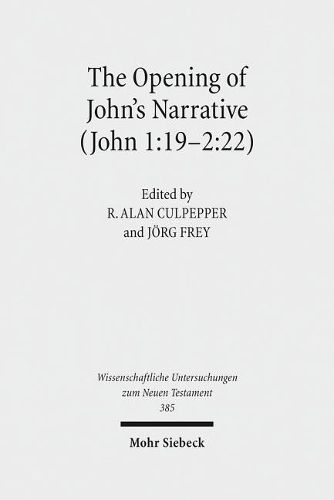Readings Newsletter
Become a Readings Member to make your shopping experience even easier.
Sign in or sign up for free!
You’re not far away from qualifying for FREE standard shipping within Australia
You’ve qualified for FREE standard shipping within Australia
The cart is loading…






The essays in this volume provide significant insights into both the Gospel and current Johannine scholarship. The beginning of John’s narrative presents interpreters with tantalizing issues. The elusive narrator introduces the witness of the Baptist, then leaves the scene. What is the function of the Isaianic quotation? What is the role of purification in John, the identity of the unnamed disciple, the meaning of the title, the lamb of God, the greater things Jesus promises the disciples will see, the role of the ascending and descending angels, or Jesus’ curt response to his mother? Some of the essays ask how scenes in these chapters would have been read in Ephesus: the story of the wedding at Cana, or the story of Jesus’ prophetic demonstration in the temple. The latter plays a strategic role in the imagery and theology of the Gospel. These essays also illustrate how, while the Gospel creatively develops and recasts traditional material, it also calls for its readers to actively engage in dialogue with the text.
$9.00 standard shipping within Australia
FREE standard shipping within Australia for orders over $100.00
Express & International shipping calculated at checkout
The essays in this volume provide significant insights into both the Gospel and current Johannine scholarship. The beginning of John’s narrative presents interpreters with tantalizing issues. The elusive narrator introduces the witness of the Baptist, then leaves the scene. What is the function of the Isaianic quotation? What is the role of purification in John, the identity of the unnamed disciple, the meaning of the title, the lamb of God, the greater things Jesus promises the disciples will see, the role of the ascending and descending angels, or Jesus’ curt response to his mother? Some of the essays ask how scenes in these chapters would have been read in Ephesus: the story of the wedding at Cana, or the story of Jesus’ prophetic demonstration in the temple. The latter plays a strategic role in the imagery and theology of the Gospel. These essays also illustrate how, while the Gospel creatively develops and recasts traditional material, it also calls for its readers to actively engage in dialogue with the text.